A game for executive coaching, in collaboration with Mikko Sorvari
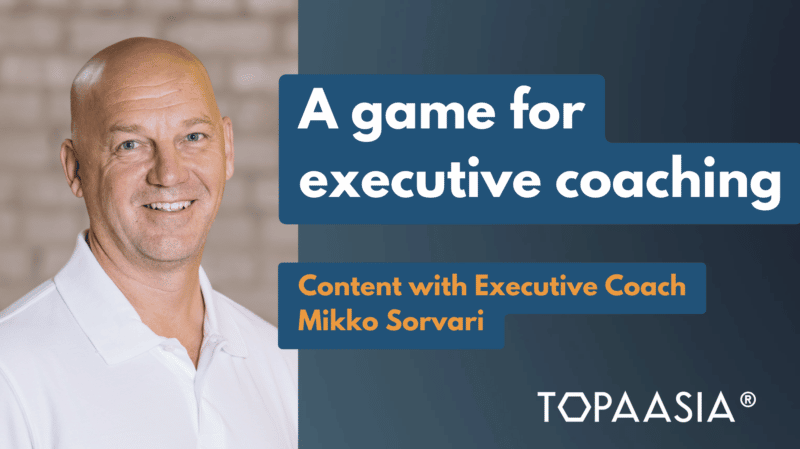
Mikko Sorvari is an executive coach who has returned to Finland from North America and works as an executive coach in the OP Group. He is also Vice-Chairman of the Board of the EMCC European Mentoring and Coaching Console Finland Section. This text contains Mikko’s views on executive coaching and the new “Executive Coaching” game that has been developed to support the coaching work in collaboration with Mikko and Topaasia. The ideas expressed in the text are Mikko’s personal views.
What is Executive Coaching?
“For leaders, executive coaching is a time to stop and be themselves, because they are constantly moving forward at a fast pace. Days and calendars are full. There is no time to stop and think about how I’m doing, who I am and where do I go from here,” Mikko sums up.
In addition to the constant urgency, being a leader is often lonely, and Mikko says that many leaders need someone to spar with, think out loud and discuss things openly. The job description of an executive coach is to act as a listener, a sparring partner and often also as an encourager.
My day as an Executive Coach
The work of an executive coach is varied and includes coaching individuals, building coaching programmes, interviewing colleagues and coaching management teams.
“I’m doing an executive coaching programme for the OP Group. We have a five-step process. First we do a lot of self-reflection using big five – questionnares and by collecting feedback from collegues. Then we look for conflicts or dark corners, and consider what the goal of the coaching is, i.e. what we are going to chase during the six-month coaching programme. We have daily feedback discussions and coaching sessions with executives”, Mikko describes his job as an executive coach.
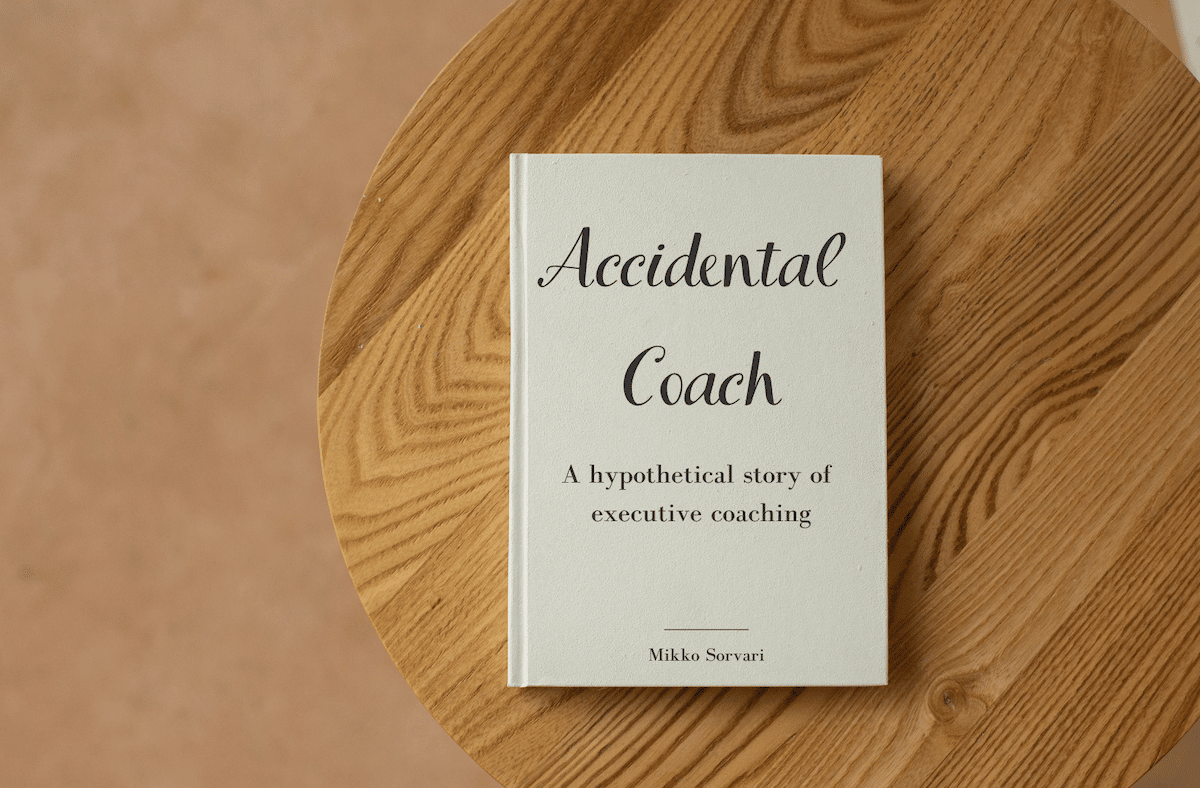
Accidental Coach – Mikko’s journey into the world of coaching
Mikko has lived his adult life in Canada and the USA, and for a few years he has been in Finland with the OP Group. He became interested in coaching after progressing to the role of manager in his previous job.
“If I ever write a book, it would be called Accidental Coach. In Canada, I was VP of Software development at a large financial services firm. As I learned that I wasn’t running things anymore, but people, I found that people liked to come into my office, sit on a chair, open up and talk, and I just listened. And then they were delighted that it was a great conversation. I thought, I didn’t really say anything, I was just listening. That’s where the interest started, and when agile ideas started to take hold in organisations, I jumped in and worked on as an agile coach for over ten years. I toured banking and insurance companies in the US and Canada. I learned a lot about the coaching side of things and took courses, including. John Mattone’s executive coaching courses, and I completed the Executive coaching and Organisational relationship and system coaching certificates. I liked the job and decided to make a career out of it.”
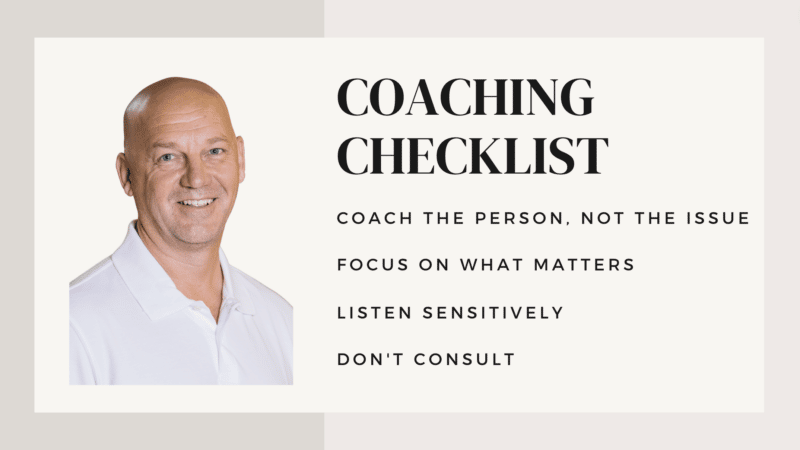
What does it take to succeed in executive coaching?
Based on Mikko’s experience, the most important skills for an executive coach are listening, and the ability to sit present and quiet with the person being coached. He raises a few considerations for successful coaching that may be overlooked, especially by novice coaches:
1. Coach the person, not the issue
“I’ve noticed that the people being coached often already have the answers for themselves. They just want the coach to affirm and pat them on the back, ‘yeah good, go like this, do like this’. But they would have done the same without the coach. Leaders know their job. So it’s important that you learn to coach the person, not the issues,” Mikko says, extending this to include human relations in the workplace.
“Often people who are being coached come in having had a difficult conversation or situation with a colleague, subordinate or supervisor. They start talking about that person, and you as the coach start asking more about that difficult person. But that doesn’t help at all! The focus has to be brought back to the person being coached, not to the other person”.
2. Focus on what matters
Coaches often start to deal with the acute issues of the moment and according to Mikko’s experience, it is often not worthwhile: “It makes both the coach and the coachee feel good to spend an hour on an acute issue, but it often doesn’t lead to any long-term results. Sometimes, however, you have to let the coachee vent so that he or she can concentrate on the session in the right frame of mind” .
3. Listen sensitively
Mikko puts a lot of emphasis on the coach’s ability to be sensitive and present, so that the coaches don’t miss the coachees’ quick shots with the stick to try out the ice: “Many executives come to the coaching session with something they might say at the beginning as a joke or a joke to lighten things up. They often justify it with ‘no, I’m just lightening mood up here’ and it gets lost in the humour. As a coach you should stop and say ‘hey let’s get back to this’ There must be a reason why they say that. It’s worth asking what was the need to say this particular thing under the guise of humour. Often it’s the thing you want to discuss, but you’re not quite ready to bring it up directly yet. And it’s therefore easy to miss. It’s worth trying to get to the core of what they want to discuss, rather than the secondary issues that are easy to go into.”
4. Don’t consult
A coach is not the same as a consultant. The coach helps the coachee to realise and reflect, the consultant tells them how things should be done. Mikko explains how to avoid consulting: “It’s important that even if you feel you have the right answers, you don’t become a consultant and tell people what to do. If you don’t know what you are doing, then the responsibility shifts from the coachee to the coach. In this case, you start solving problems too early. Let them think through those things and own the thing.”
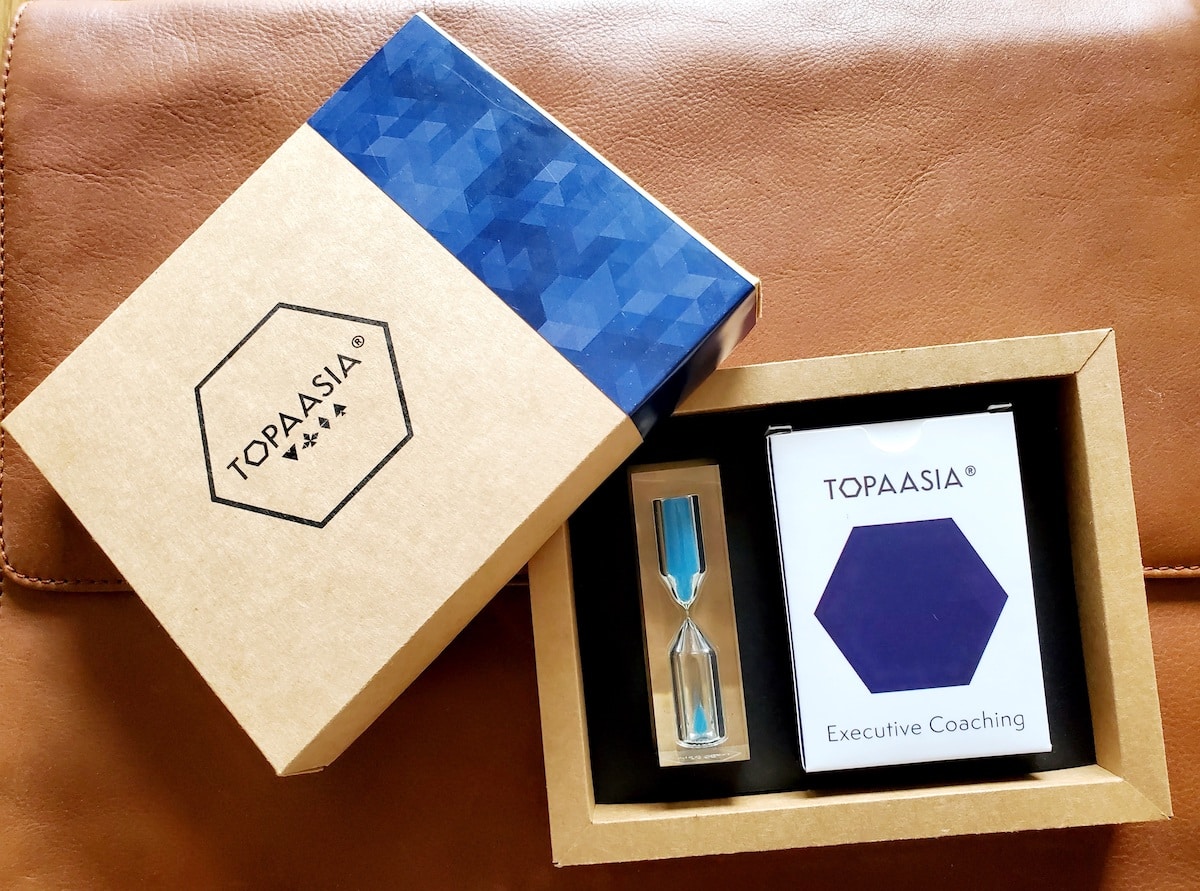
Physical Topaasia Executive Coaching game
Executive Coaching – a game to support executive coaching
Mikko and Topaasia have collaborated on a new Topaasia game content to support executive coaching, called Executive Coaching. The game is available as part of Topaasia’s digital SaaS service or as a physical game deck. Why was this game made and what is the use of it, Mikko?
“There are very few management coaching tools. There are self-assessments and online surveys that look at the person and personality, but yes, I think this is one of the most powerful tools. I have this game with me all the time, and sometimes there are random scenes with people when they come in and say ‘hey, do you have time to coach’. Then I can pull this deck out of my back pocket and say, “sure, let’s play a little game”, and the conversation moves forward very naturally and smoothly”, Mikko describes the game.
Another benefit is that the Executive Coaching game helps to focus the coaching situation on the core issues that really matter most to the coachee.
“All coaches sometimes have coachees who can really fill an hour with all sorts of things, but they wander and waffle and never get to the real issue that needs to be discussed. I remember that, especially as a new coach, it’s very difficult to stop them and get back to the main issue at hand. That leaves out the coaching. This deck really help to focus on that one thing quickly. Get to the one thing we need to talk about. Sometimes, and with some coachees, it’s good to pull out this deck of cards and play the one thing you need to talk about, and then you can quickly find where to focus on that particular day.” Mikko says.
Thirdly, using the game helps to get concrete, but small enough practical steps. “What’s great about this game is that it’s easy to find the action item at the end, so how to go from here, what to do differently, what’s the homework.” Mikko describes.
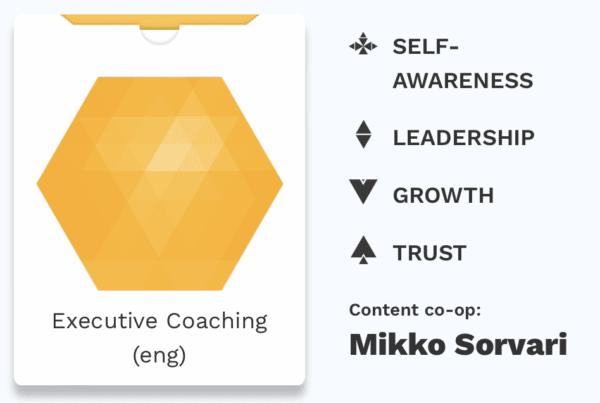
The Executive Coaching game consists of four themes: building trust, self-awareness, leading people and growth.
Mikko says he spent a lot of time thinking about the themes of the game and that was the hardest part of building the deck. The themes of the deck, or decks of cards, ended up being building trust, self-awareness, leading people and growth.
“I have found that if leaders have these skills, they are usually good leaders. They know how to build trust with their people and colleagues. They have good self-awareness – who I am, how I act, and what my weaknesses and strengths are.”
In particular, according to Mikko, people management skills remain a lacking skill for many managers due to the career progression of becoming a manager:
“Leading people is important because you get to leadership positions by being good experts and getting things done, but once promoted, a leader reaches a stage where he or she is no longer paid to do things, but to lead people. And that is a skill that many people lack. When experts are supposed to lead people, they often go back to doing because it’s familiar and safe. It’s a disservice that doesn’t help organisations develop. In this case, the leader becomes an encyclopaedia of answers.”
The fourth theme of the deck is growth, which refers to the systematic growth of a leader as a professional.
“Leadership growth does not happen by chance. You have to have a goal in mind – how I grow, what I need to do to get to the next level. Even middle-aged people like me are still thinking about what I’m going to do when I become an adult.”
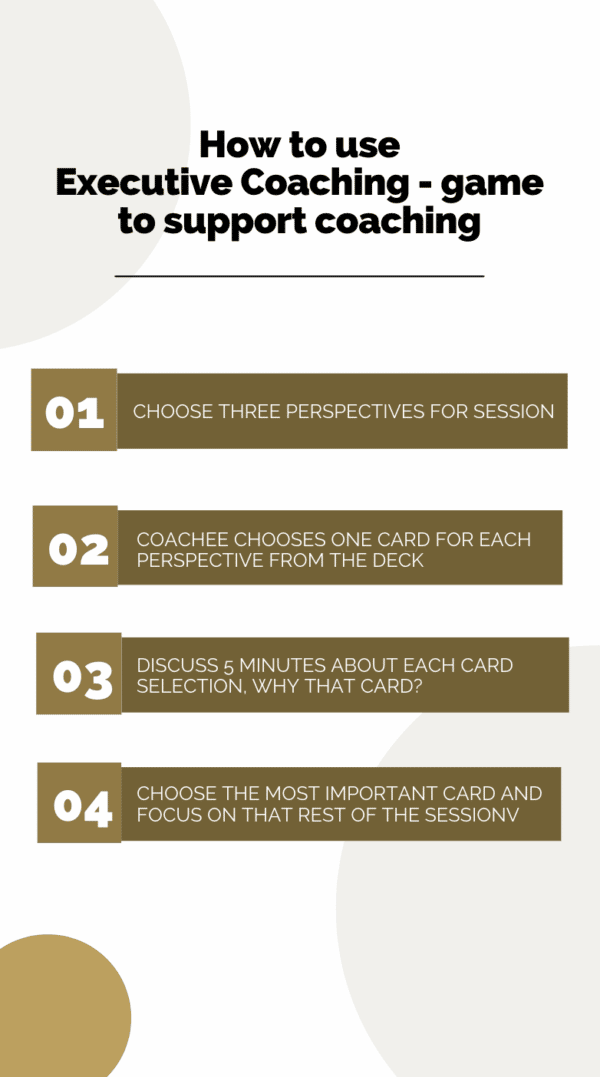
How do you succeed in using the Executive Coaching game?
Usually Topaasia sessions are group discussions with 4-10 participants. In executive coaching, Mikko uses the game also for 1-on-1 discussions, and he explains how it works:
“Here, three perspectives are chosen at the beginning and the person being coached chooses one card for each perspective from their hand/deck.
Then we have a short, 5-minute quick a conversation about why you chose this card? What was important about it? Then that card is put aside in the parking lot and you go to the next one. This is a quick way to go through the three cards and stimulate curiosity. Why did he choose these cards?
Then, from these three cards, the most important issue is raised, which is what we should talk about today. They usually figure out for themselves which is the most important card for them to deal with.
The remaining 45 minutes will be spent on that one issue. The chosen card also helps by bringing the client back to the topic at hand and helps and focuses on the issue that is to be discussed.”
Mikko’s final words of advice to his coaching colleagues for the game:
“When using the game as a coach you have to be able to ask questions, be curious, be calm, discussion is important. It’s worth taking your time if the person you’re coaching happens to be quiet and refrain from thinking out loud or giving answers yourself.”
– – – – – – – – – – – – – –
Thank you Mikko!
Mikko Sorvari-Linkedin
Buy the physical Executive Coaching game for 199€ (+VAT) as a pre-order
Try the game for free on the Topaasia digital service for a 30day trial period.

